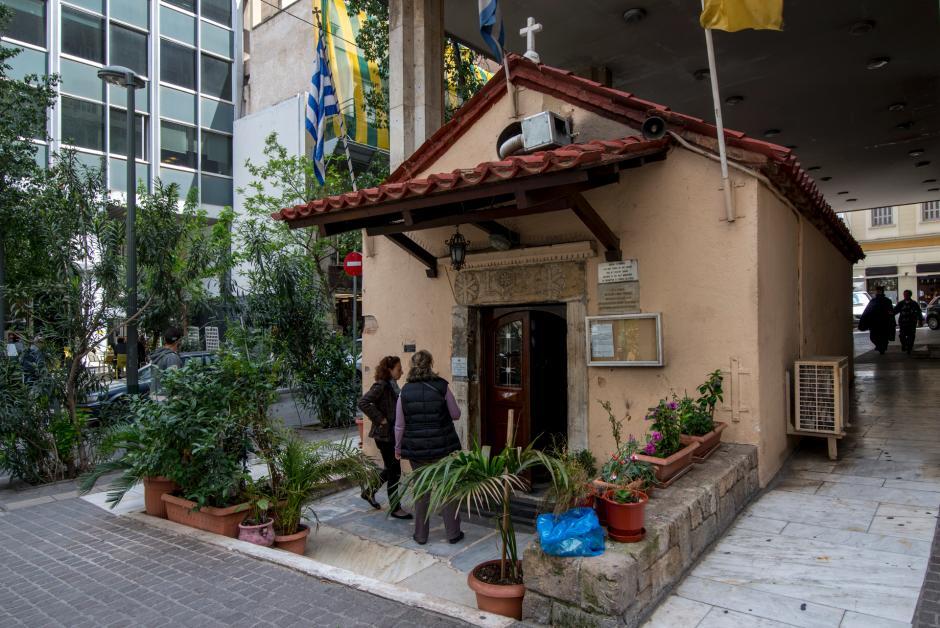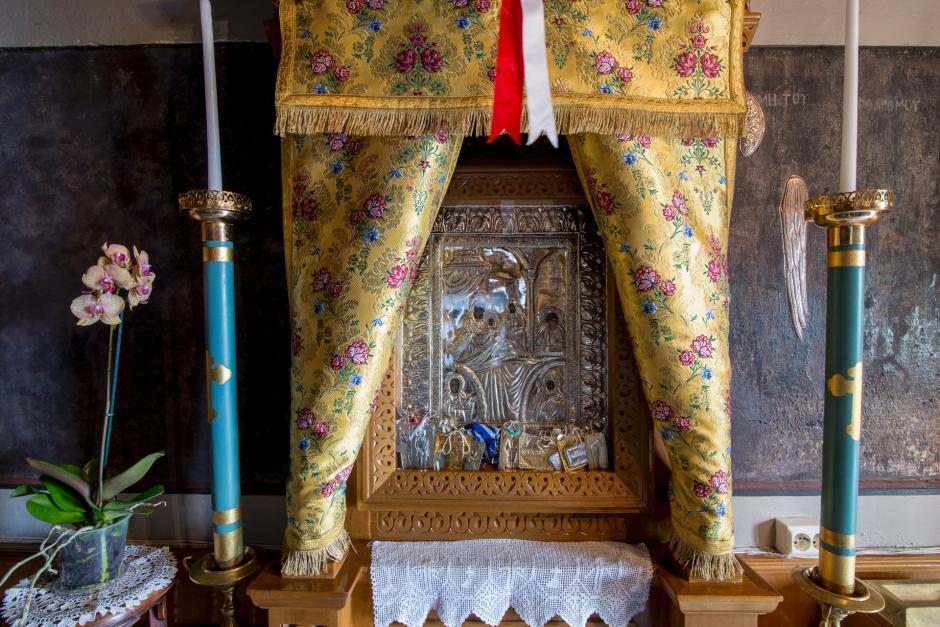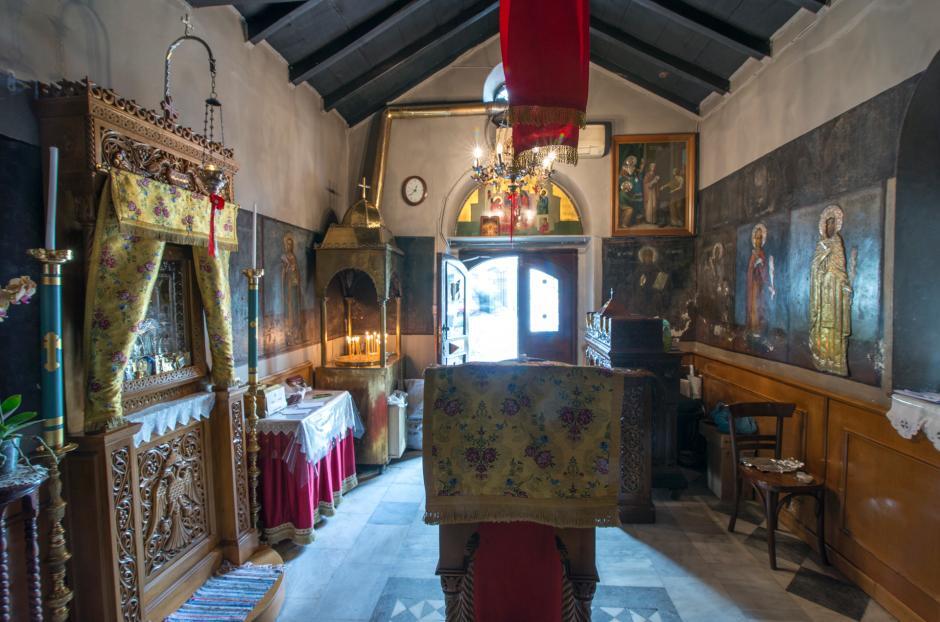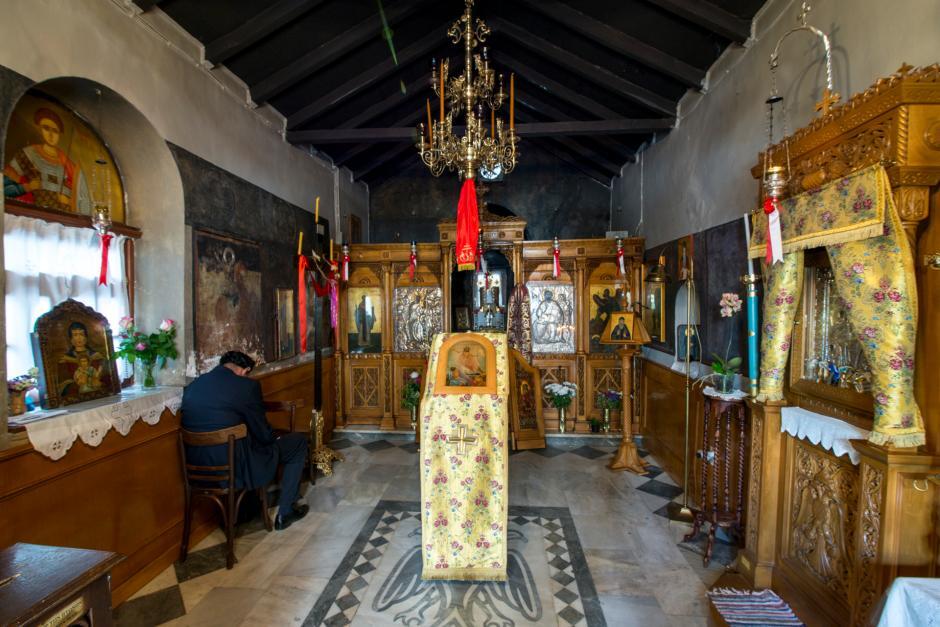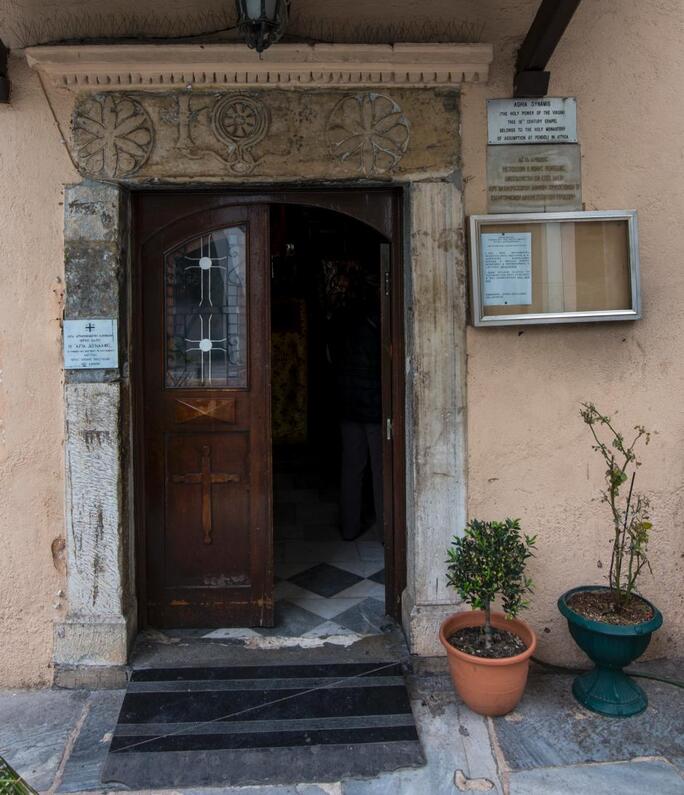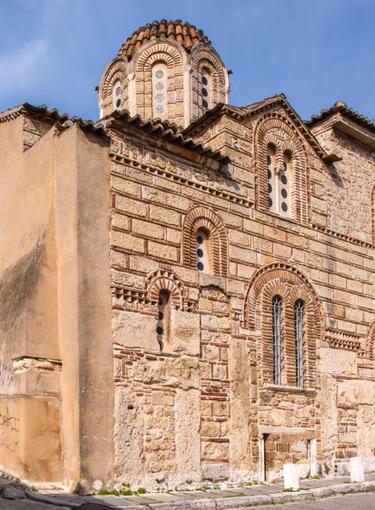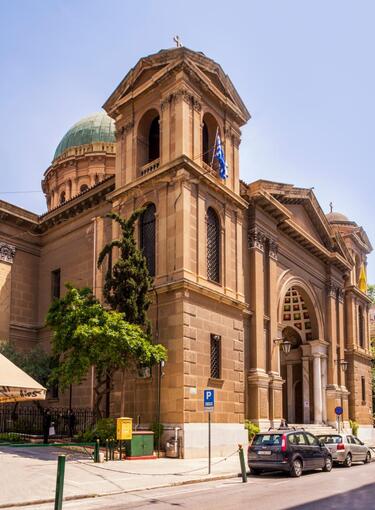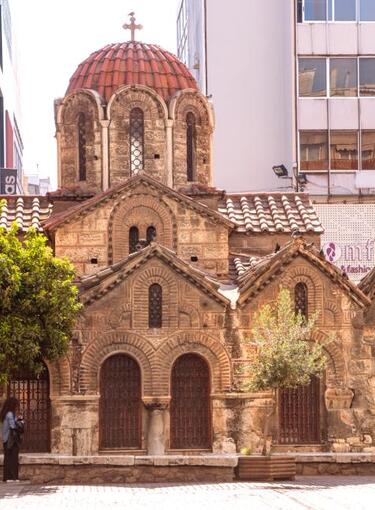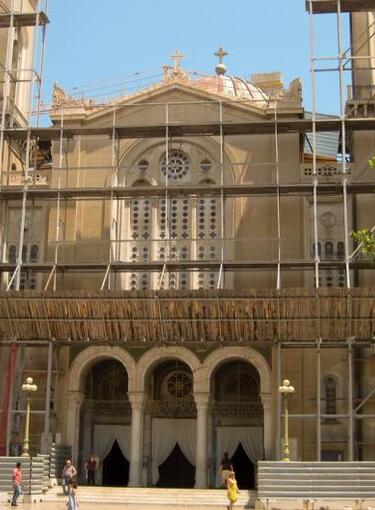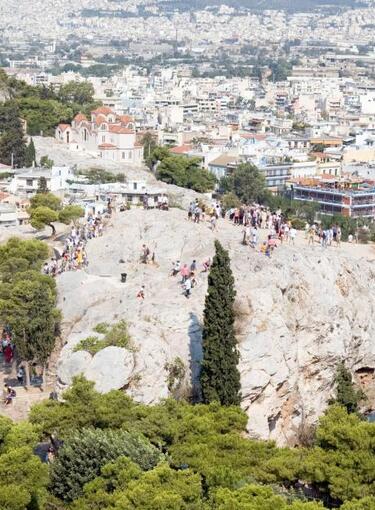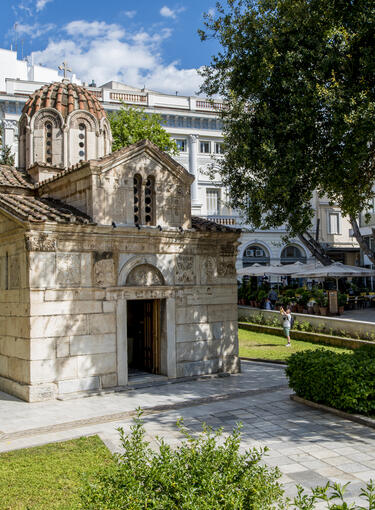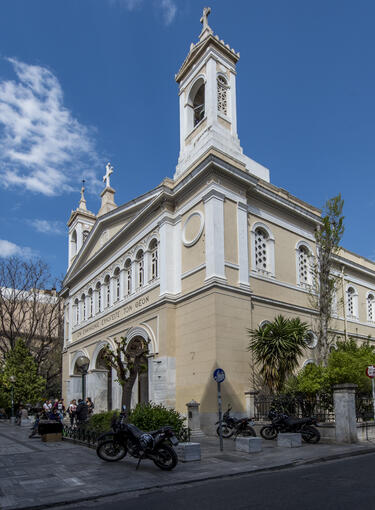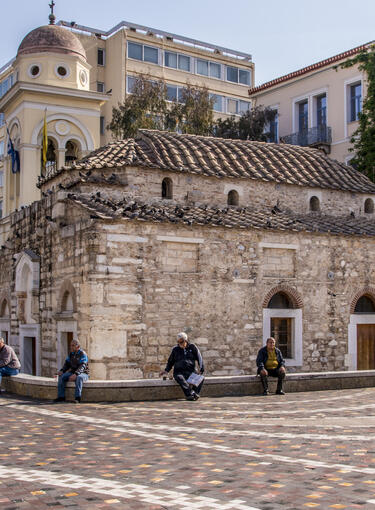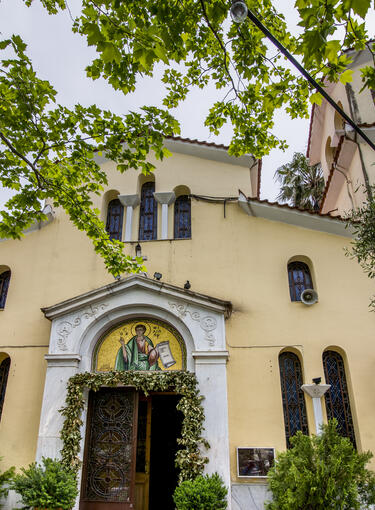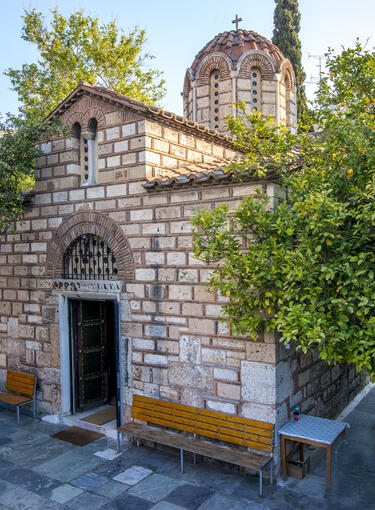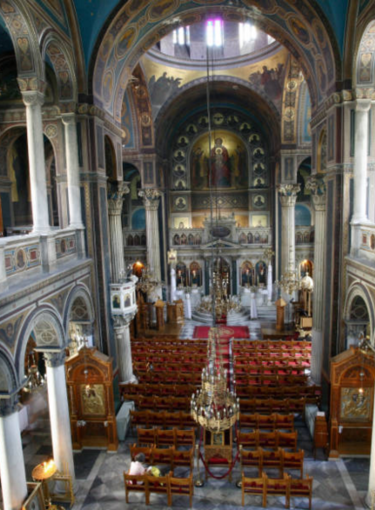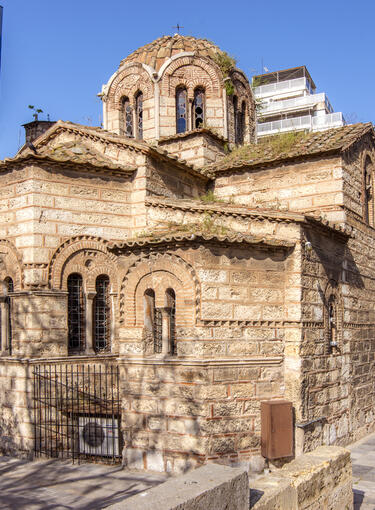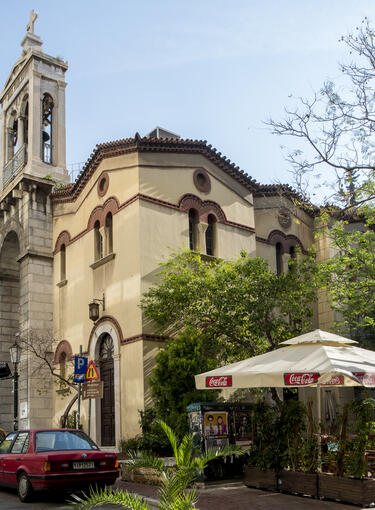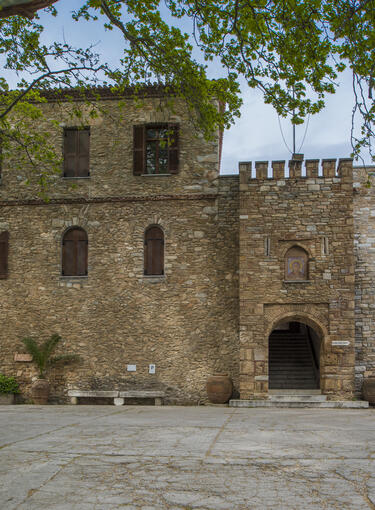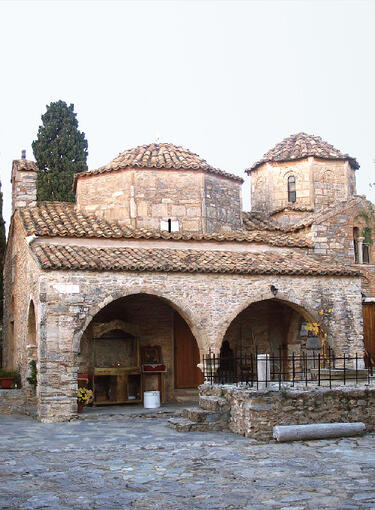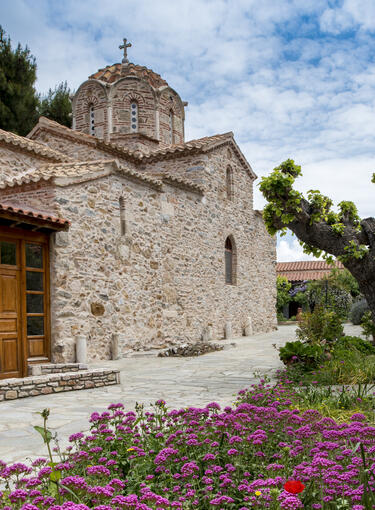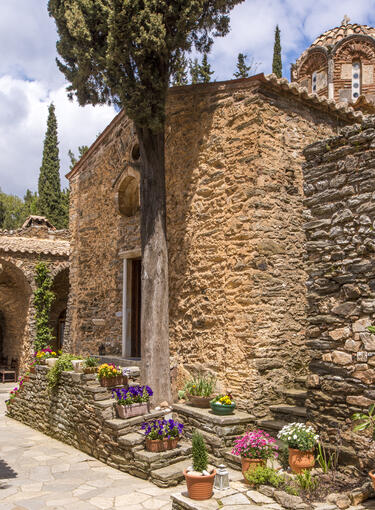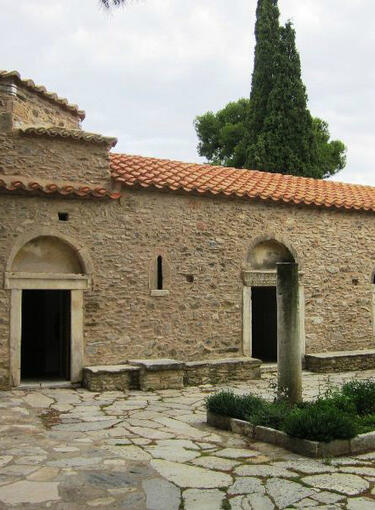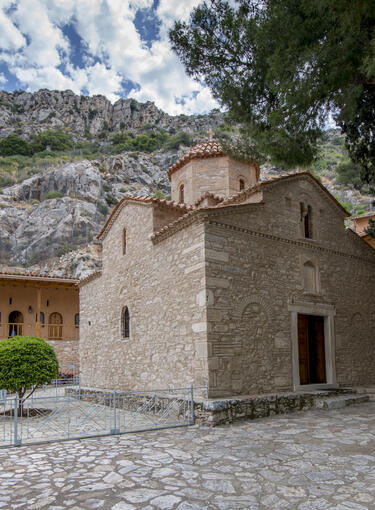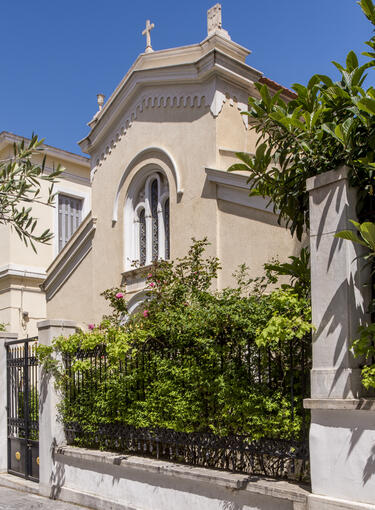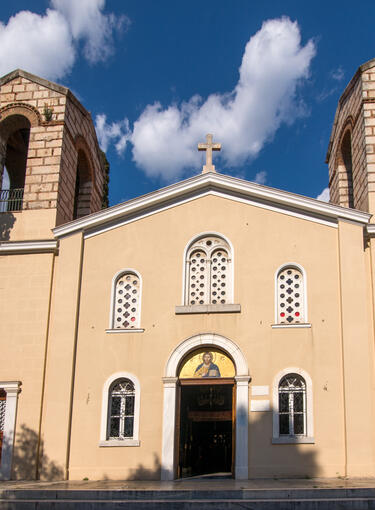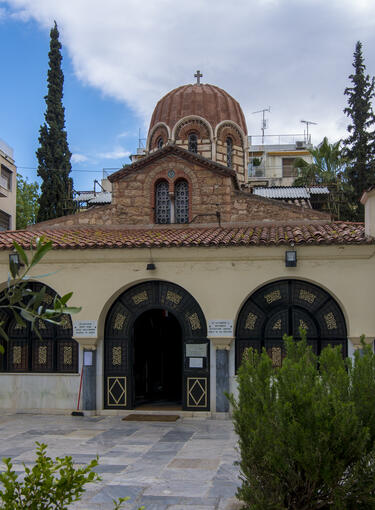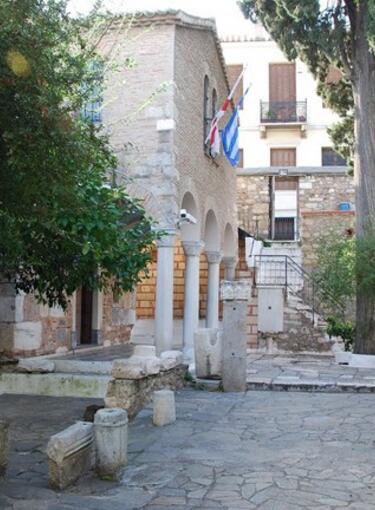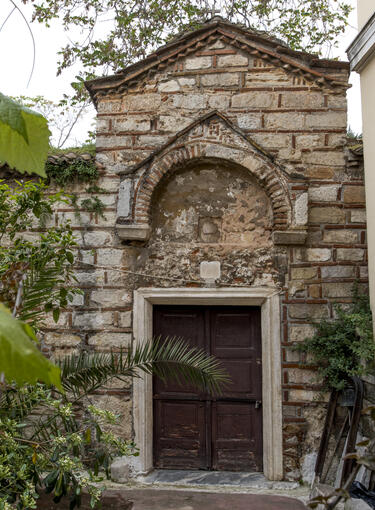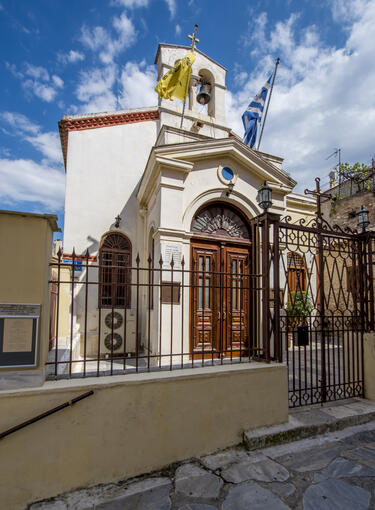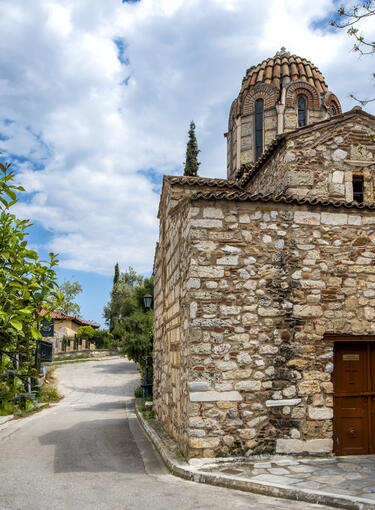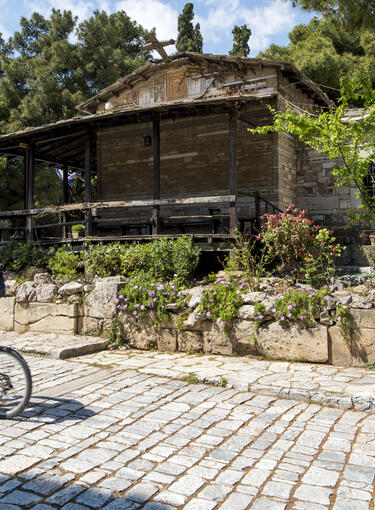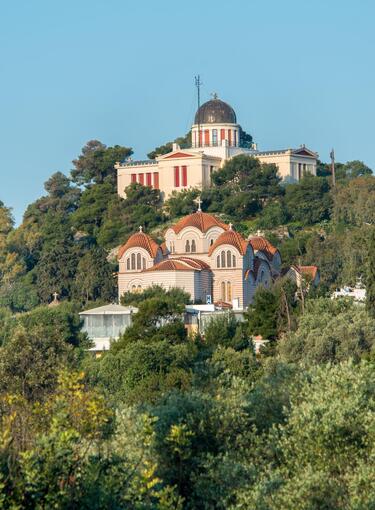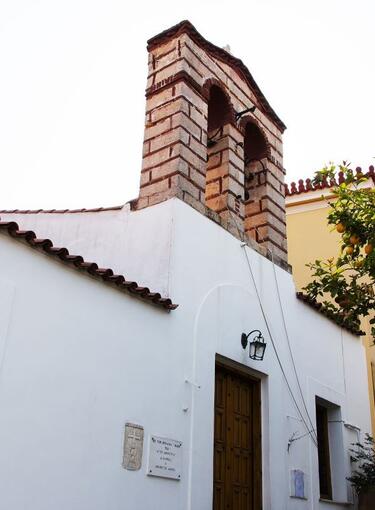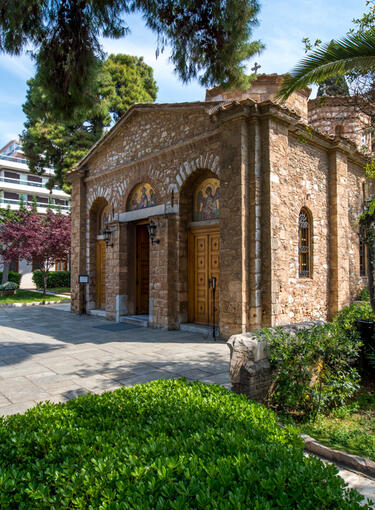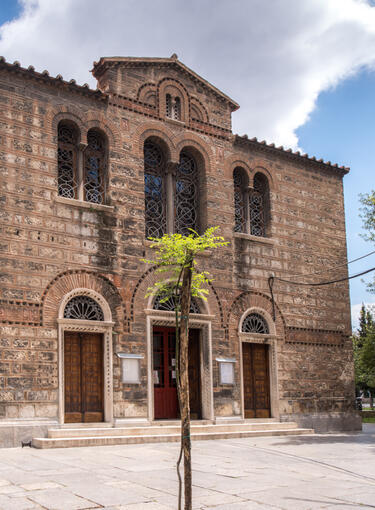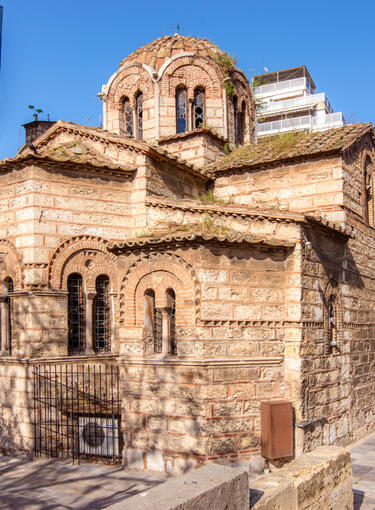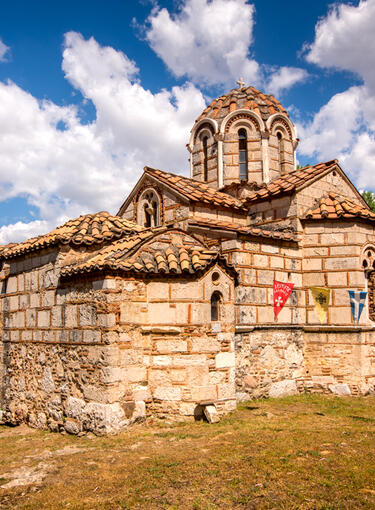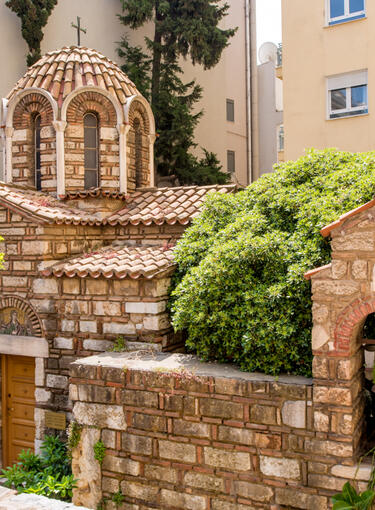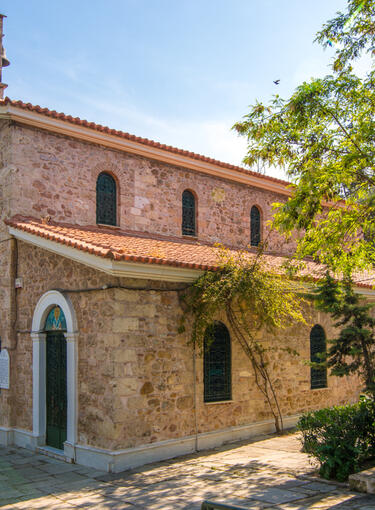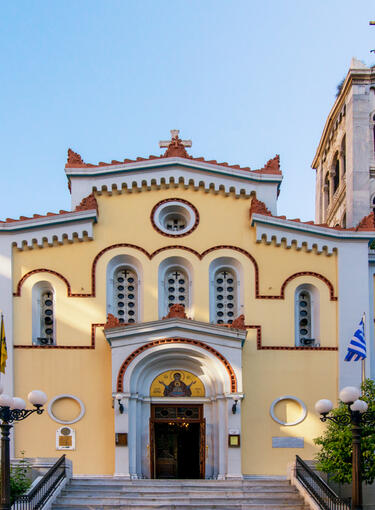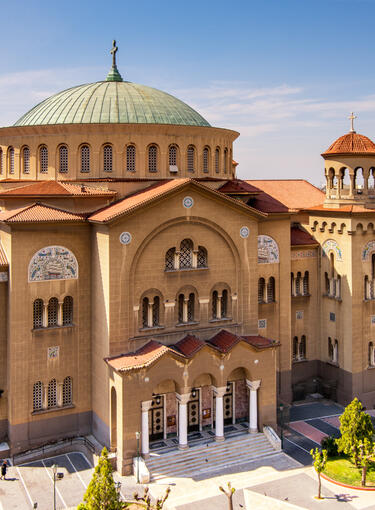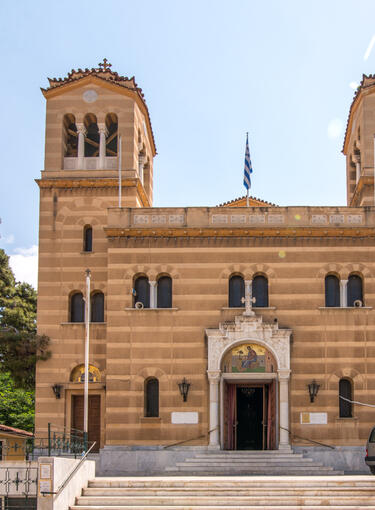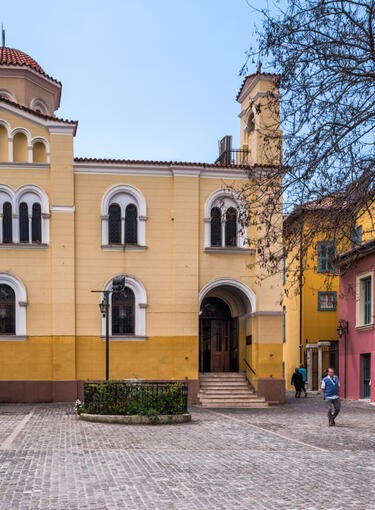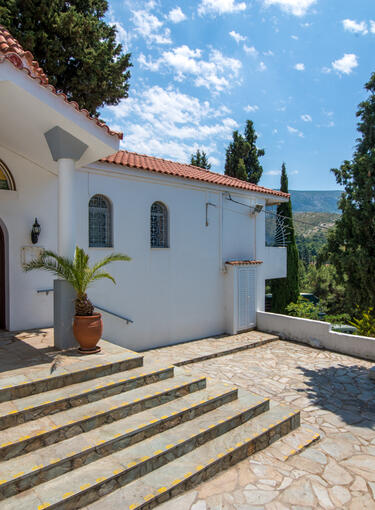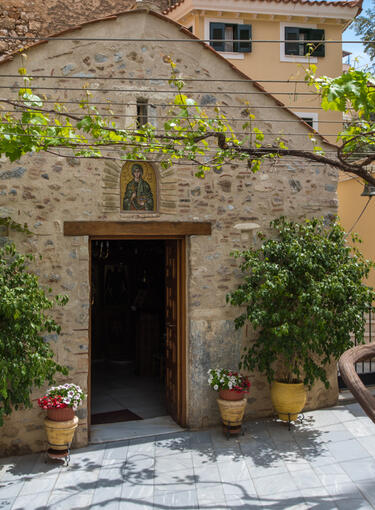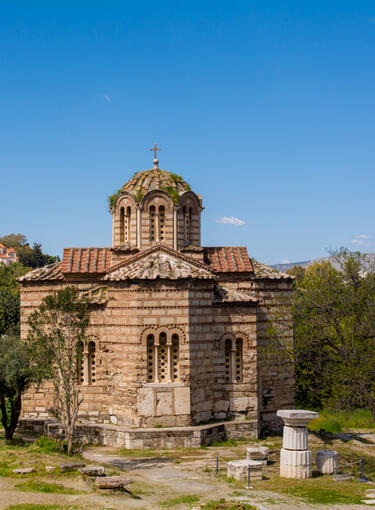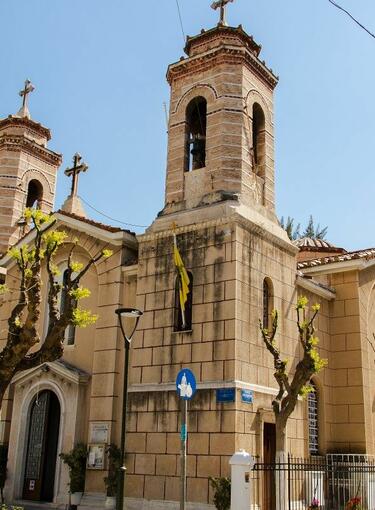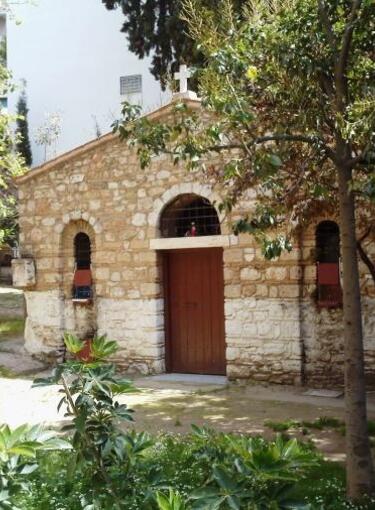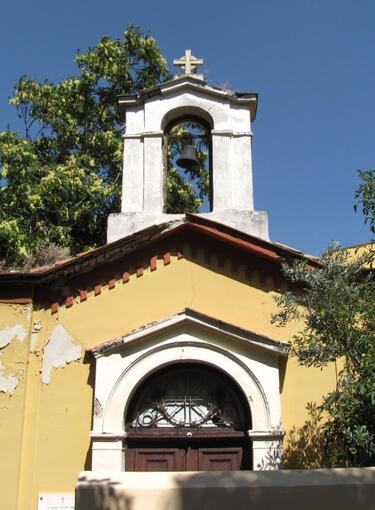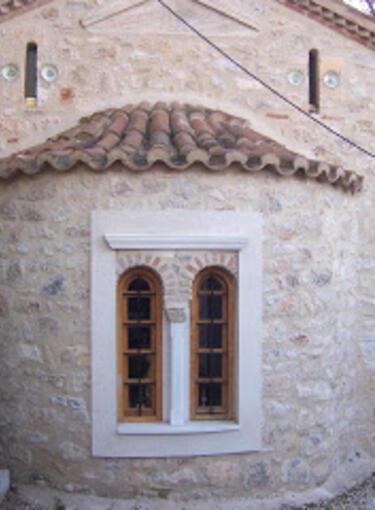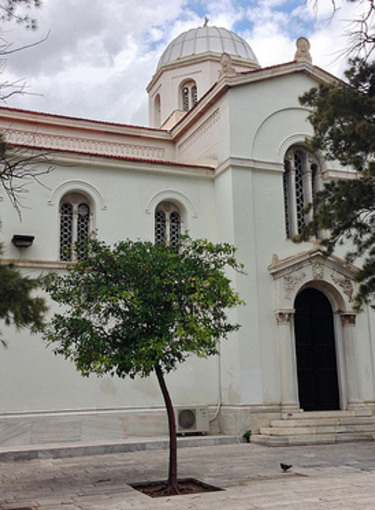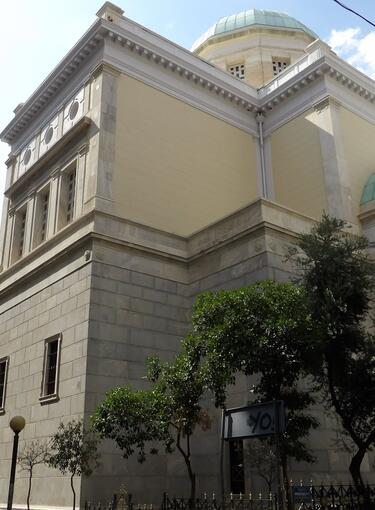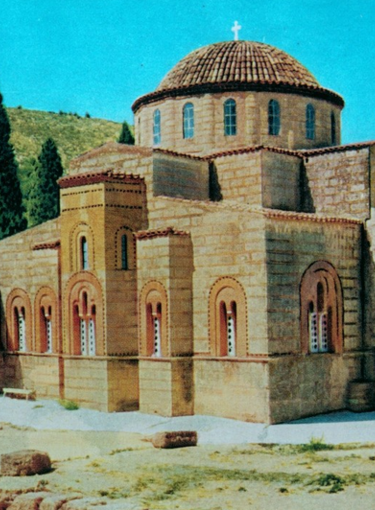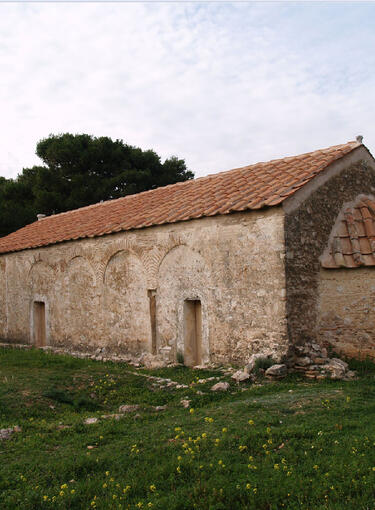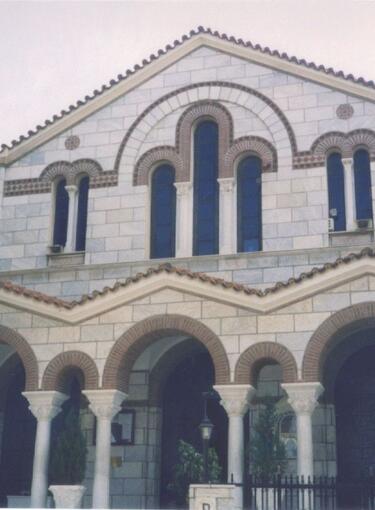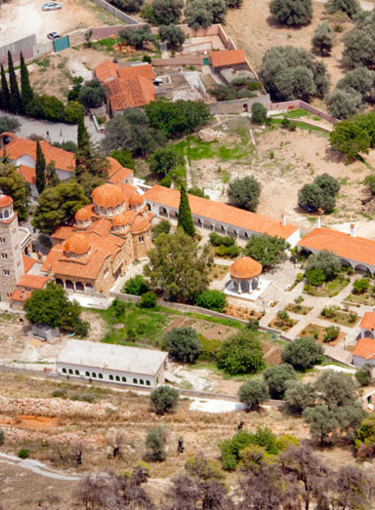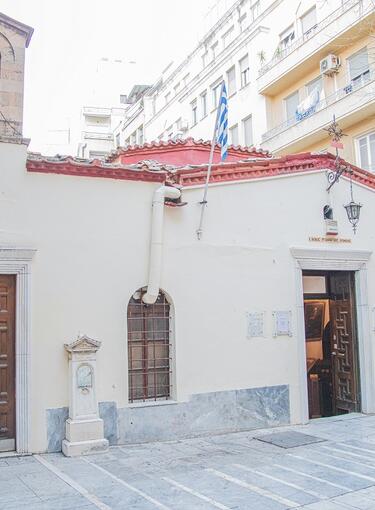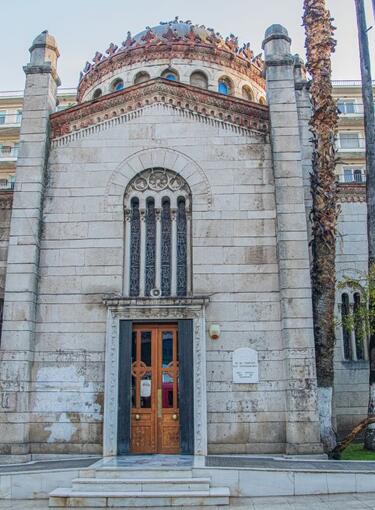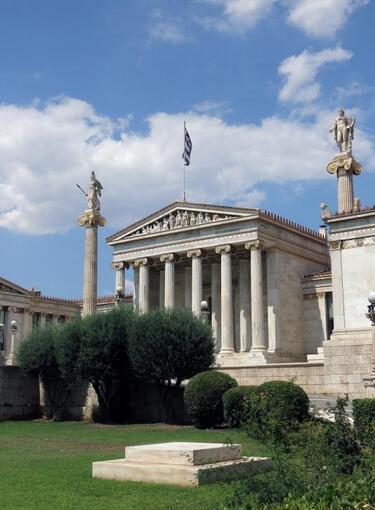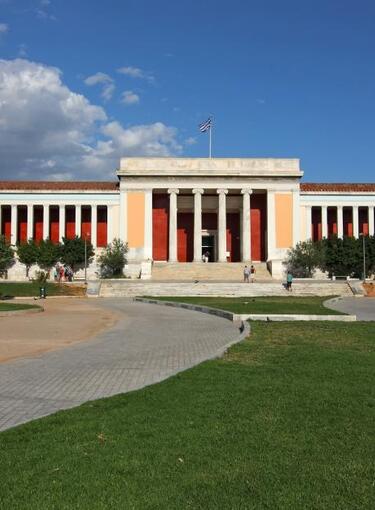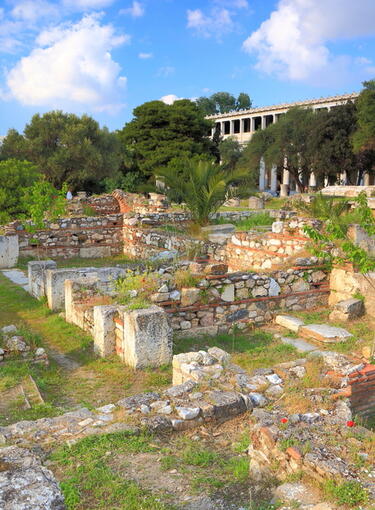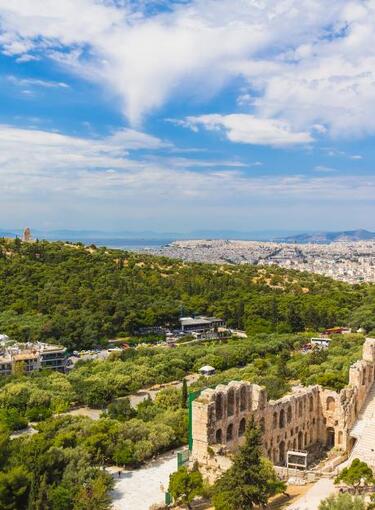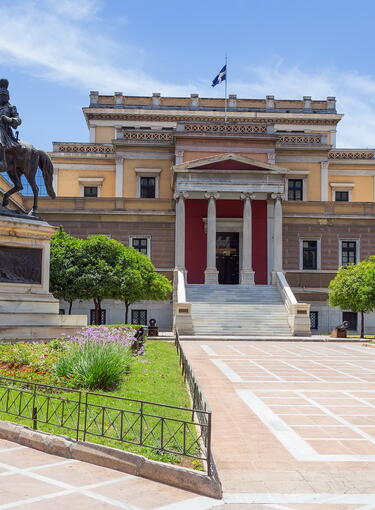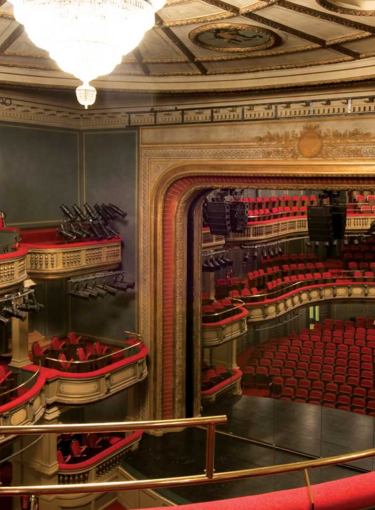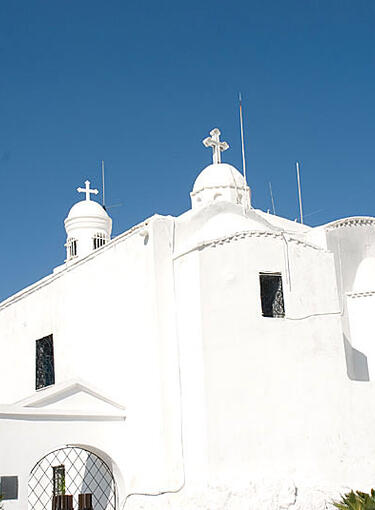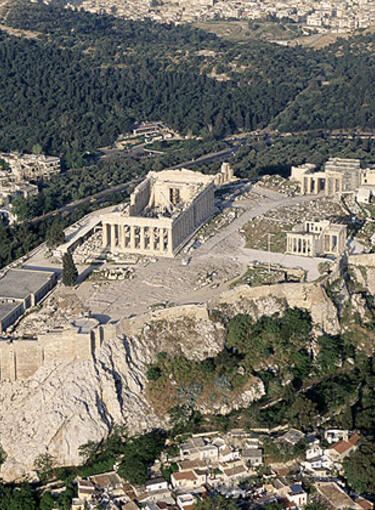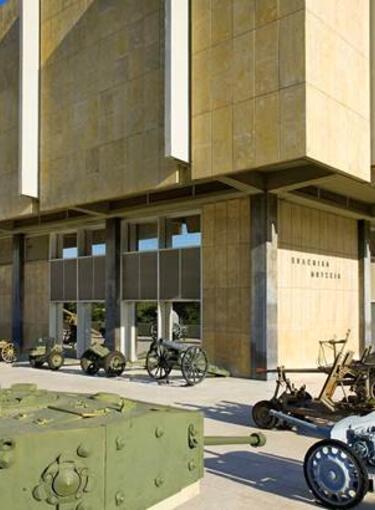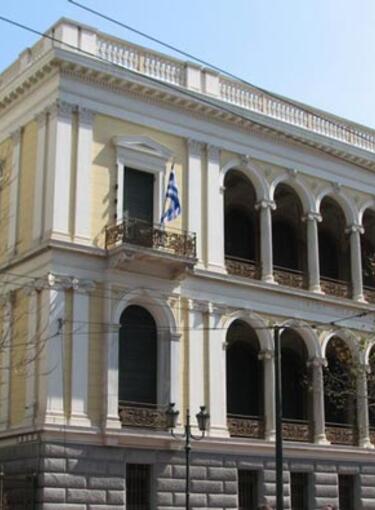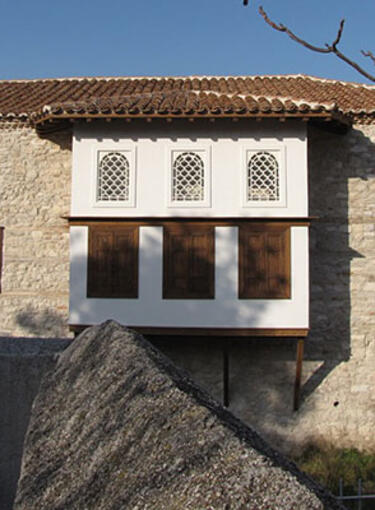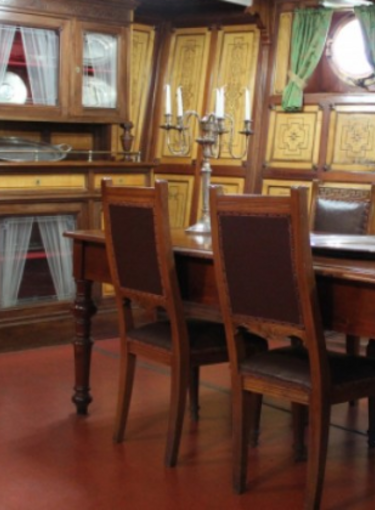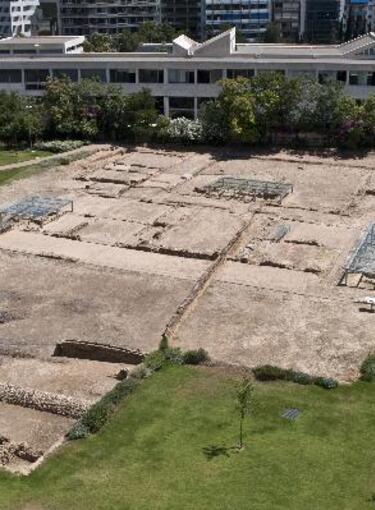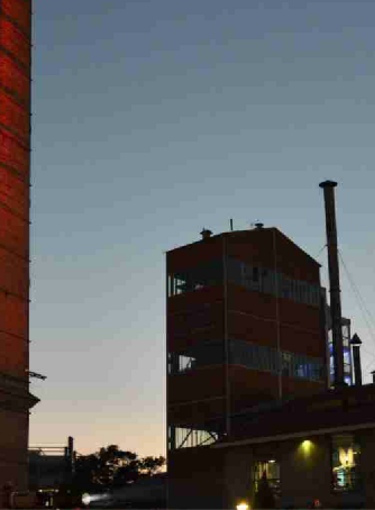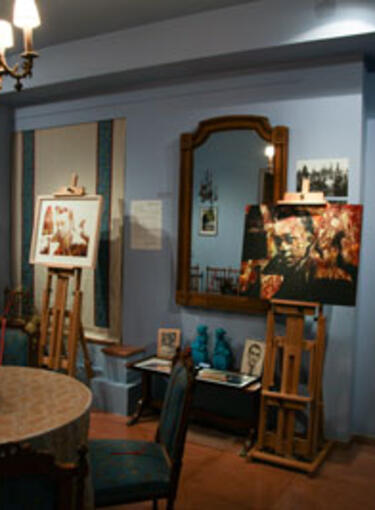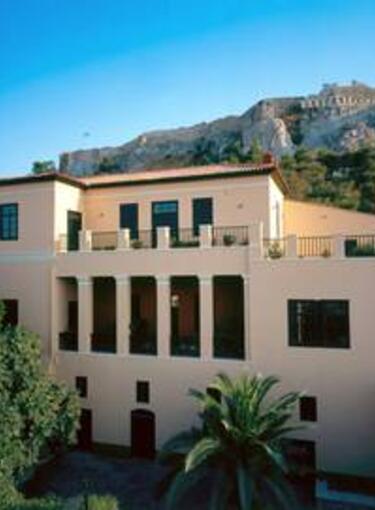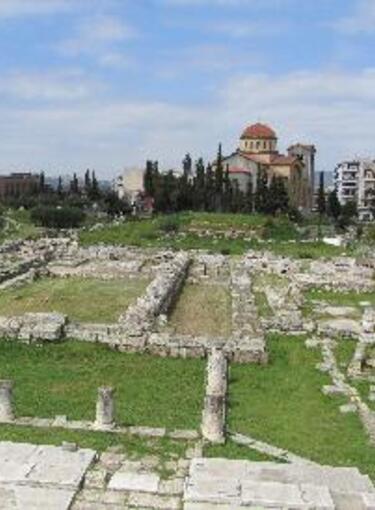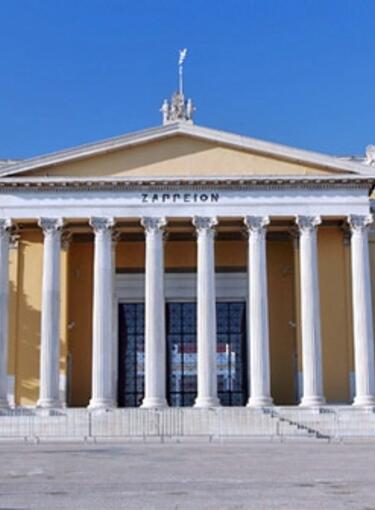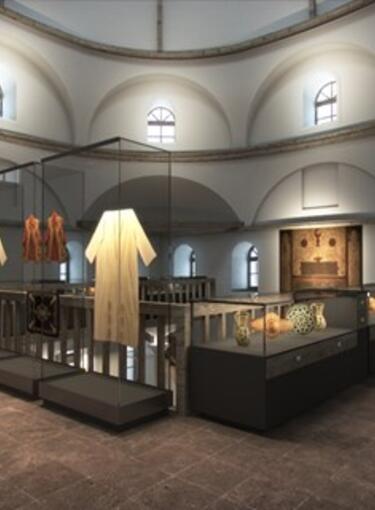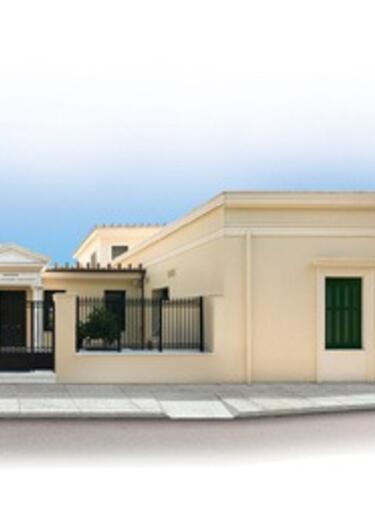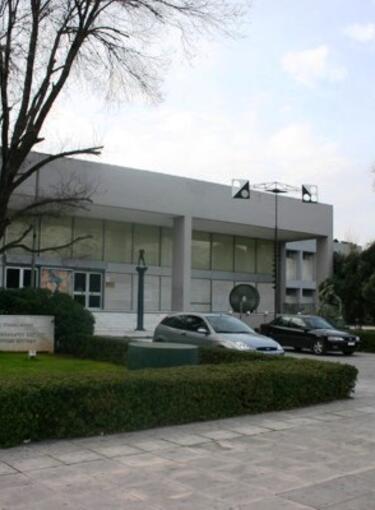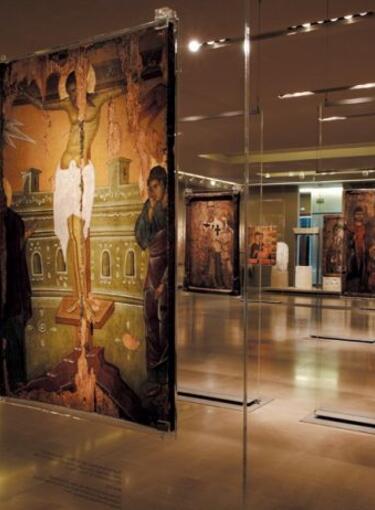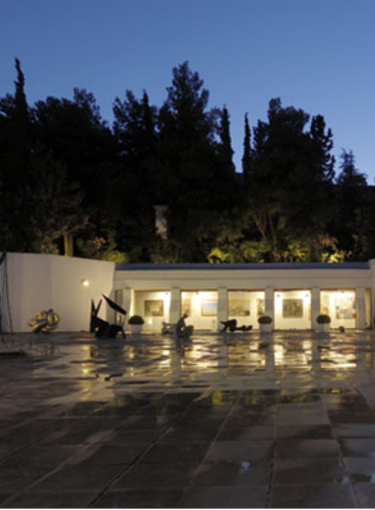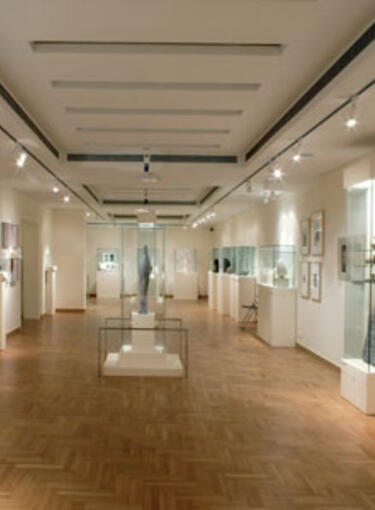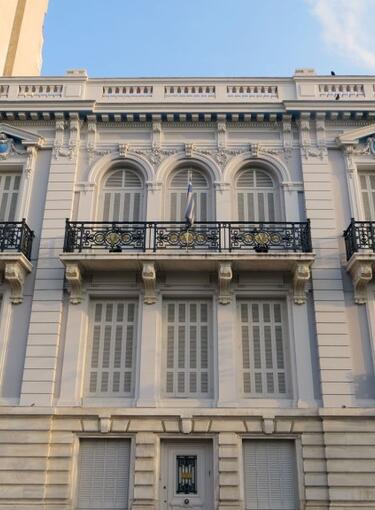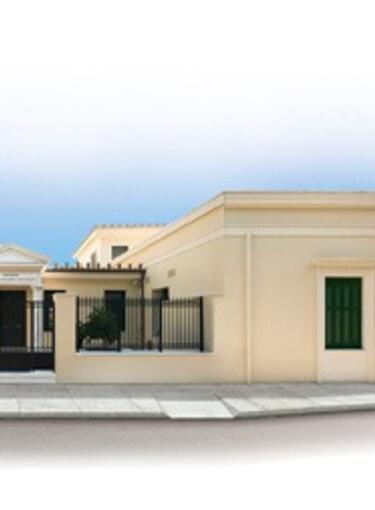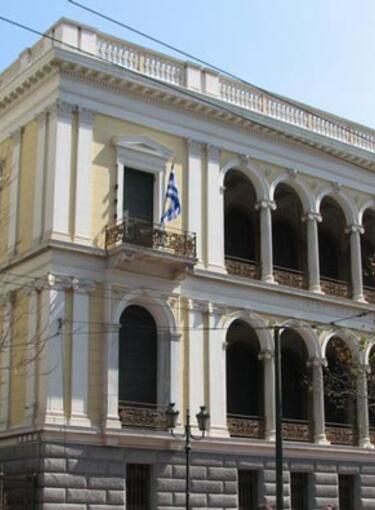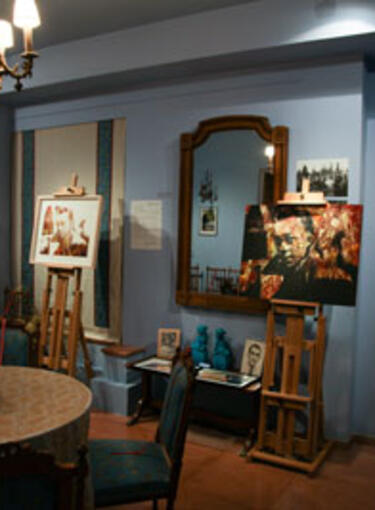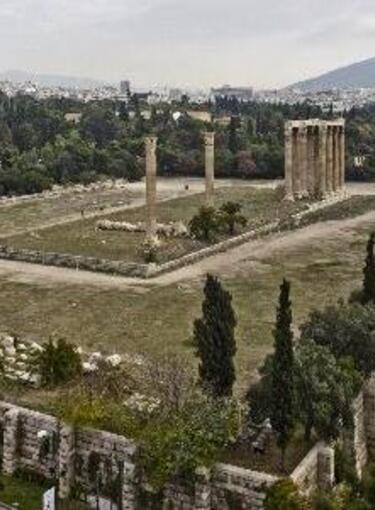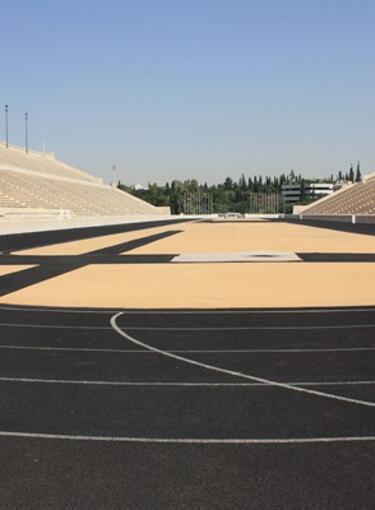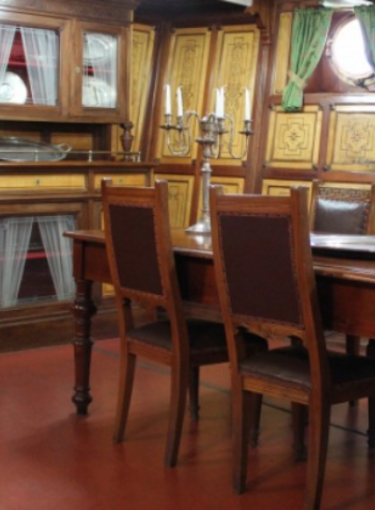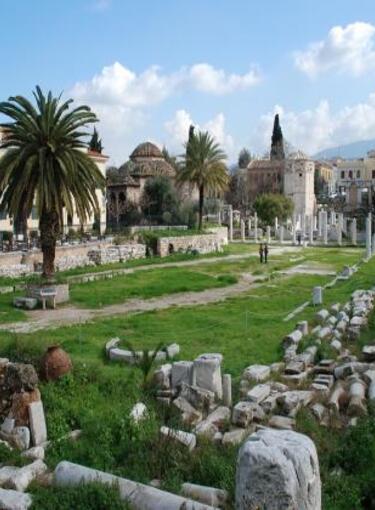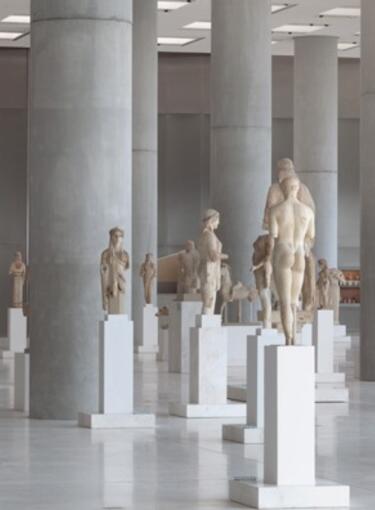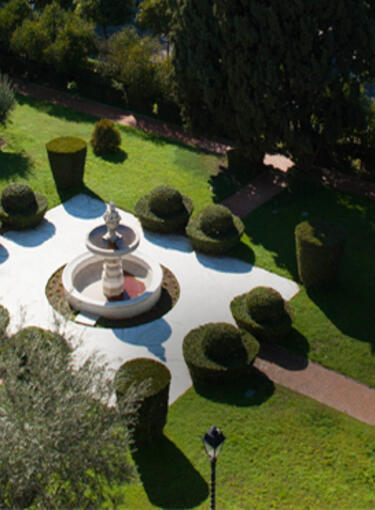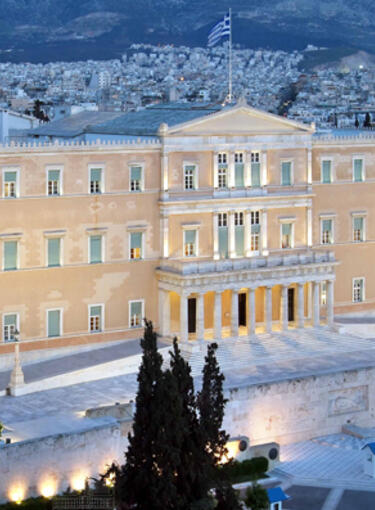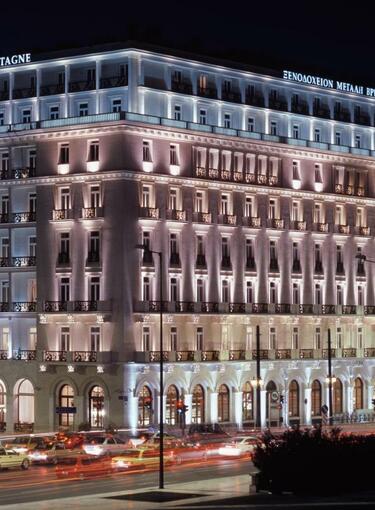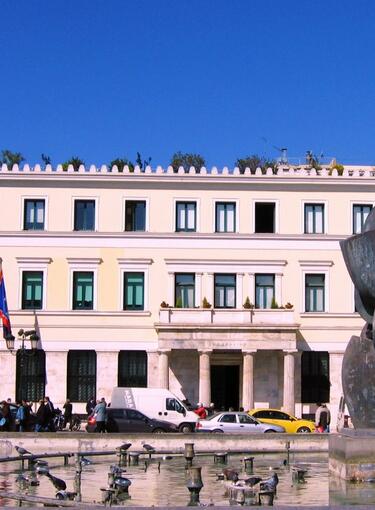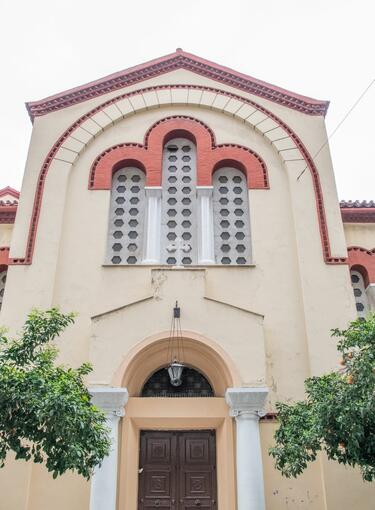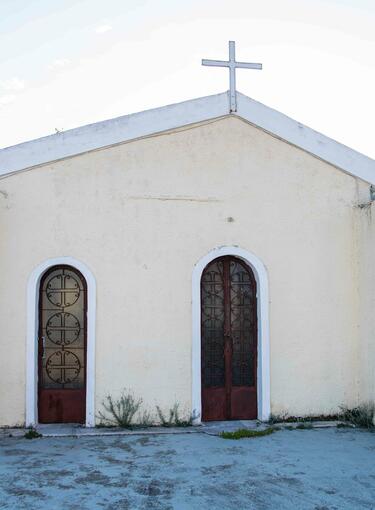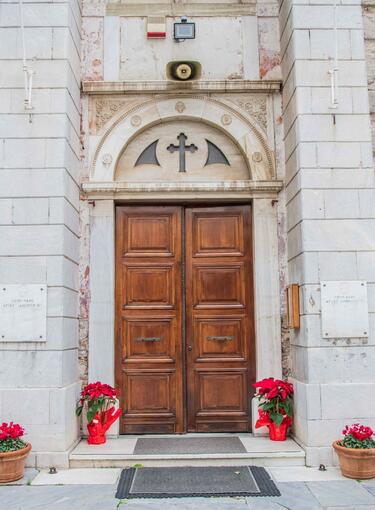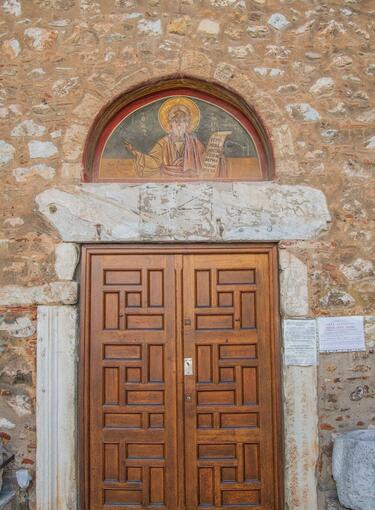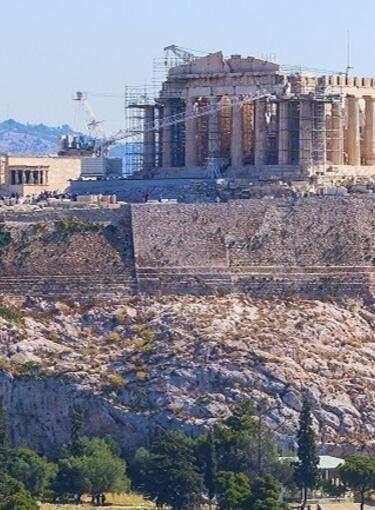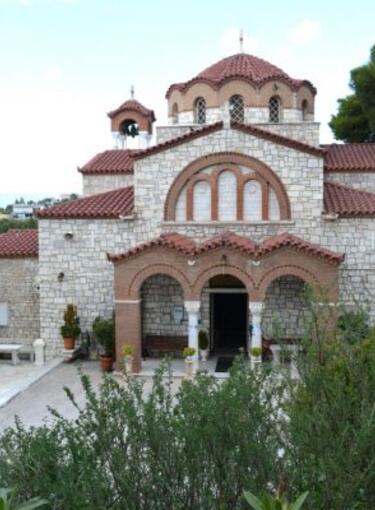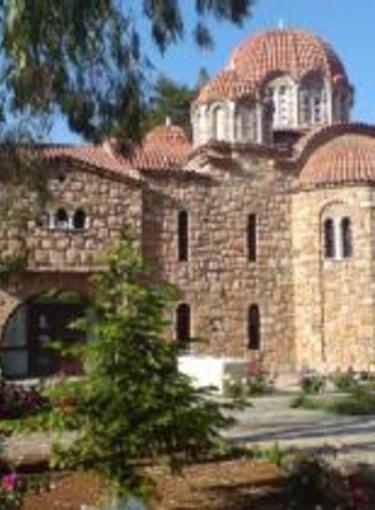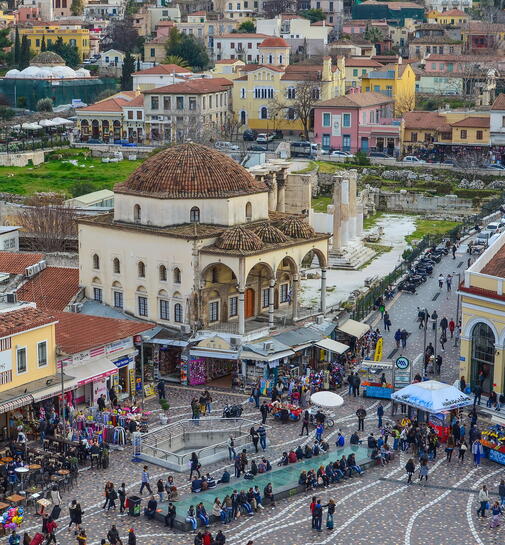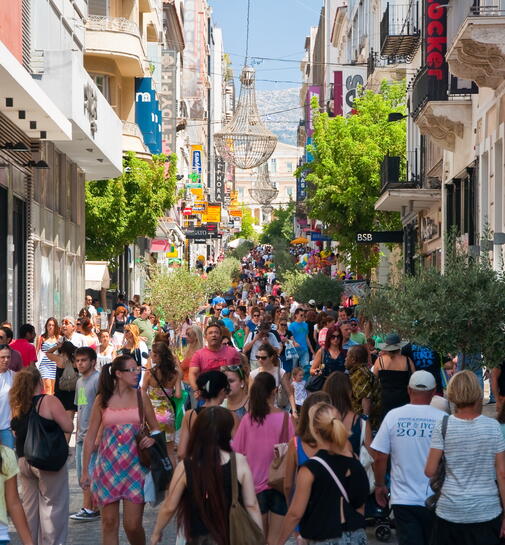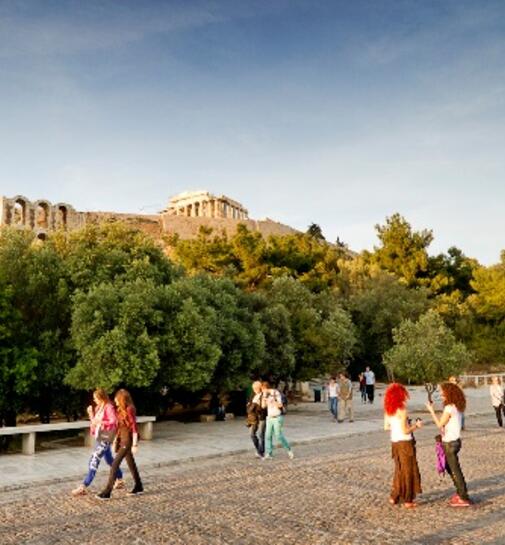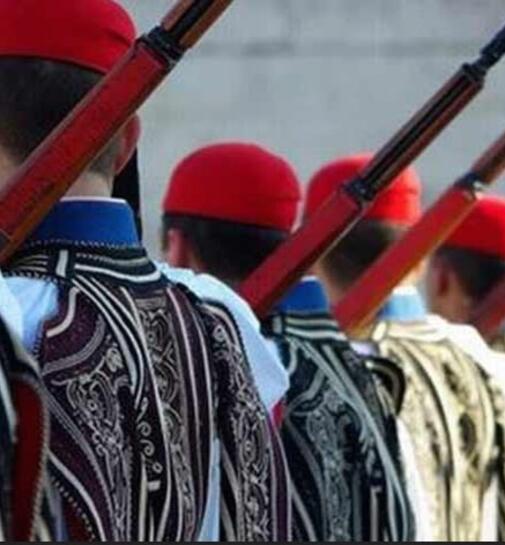At the intersection of Mitropoleos and Pentelis street, at the centre of Athens, is the picturesque church of Agia Dynami (Holy Power), completely surrounded by the modern building which housed the Ministry of Education and Religion.
The church was erected in the 16th century over the ruins of an ancient temple of Hercules and it was the Metochi of the Penteli Monastery, while in the same area there was an Old Christian basilica. The name Agia Dynami refers to the Virgin Mary and was given to the church because all pregnant Athenian women in order to give birth to strong children. For this reason the church’s celebration takes place of September 9th, day of the birth of Virgin Mary.
According to tradition, just before the Greek Revolution in 1821, at the Metochi ammunition was made, supposedly for the Turks, but most of it was given to the Greeks. During the Revolution the church was destroyed and then it seems that sacred remains and relics were preserved by the monks. The rest of the buildings from the complex of the Metochi were probably demolished during the opening of Mitropoleos street, in the years after the liberation. The church was restored in 1912, while in the 1950s, when the building of the Ministry was erected, its area was limited in its present day form. In 1963 they added the steeple over its entrance.
This small church belongs to the type of one-aisled vaulted basilica. Its walls are decorated with murals depicting, among others, Agia Aikaterini, Agia Kiriaki, Agia Filothei, Agios Ierotheos, Agia Dimitrios, as well as the Beheading of John the Baptist. Under the floor of the sanctuary there is a large underground cave approximately 15 metres long, which continues to a tunnel.
Church of Agia Dynamis (Sacred Power) (Mitropoleos Street)
At the bustling center of the city of Athens, at the location of the ex district of Rodakion and at the intersection of Mitropoleos and Pentelis Streets, for five centuries now, has stood erect the small and humble church of Agia Dynamis (Sacred Power), which is dedicated to Virgin Mary and in particular, to the Nativity of Theotokos. According to tradition, it was there that women in late pregnancy took refuge pleading Virgin Mary to grant them power during labour.
As testified by archeological research, the church was built on the ruins of the pagan altar dedicated to the demigod Hercules, the strongest hero of the Greek mythology. During the recent restoration and renovation works, an older triple-naved basilica was found, probably of the 11th century, while the present chapel is a building of the 16th century.
It was a large in area dependency (‘metochion’) of the Holy Monastery of Penteli, with significant agricultural production and livestock. In fact, many Fathers of the monastery, stayed for some time period at the Metochion. When the lands of the monastery were expropriated to enable the construction of Mitropoleos Str., the Metochion declined. In 1951, the church was surrounded by a building in which, initially, the Ministry of Education was housed for many years, while today it houses a luxury hotel. From the name of the district, the Metochion was named Metochion of ‘Rodakion’. It was, also, known as Virgin Mary ‘Mentelitissa’ or also ‘Menteliotissa’, a name which derived from a linguistic corruption of ‘Pentelitissa’.
Agia Dynamis Church is a single-naved, barrel-vaulted basilica with a wooden roof, for the tiling of which were used large concave roof struts and tubed cover tiles. As one may observe, many members of the ancient church are dispersed on its walls, which means that they were used as structural elements in the erection of this small church. At its eastern side, three semicircular apses are outlined, with the central being larger, which protrudes externally, while the other two side apses are smaller and are inscribed within the interior of the wall. At the western side the gate of the church is located, which bears a marble frame with Christian symbols.
The windows of the church are narrow, relatively small and resemble embrasures. In the interior part, on the northern wall one discerns the murals of Saint Marina, Saint Irene, Saint Paraskevi, Saint Dimitrios and Saint Ierotheos. Murals are to be found also on the southern wall, such as the ones of Saint Filothei, of the Beheading of John the Baptist, of Saint Ekaterini and Saint Kyriaki.
The church is integrally linked to the pre-revolutionary period of 1821. According to Father Kyrillos Degleris, the then prior of the Penteli Monastery, very close to the church, in a building of the Metochion, Pavlis Alexiou, the so-called ‘Mastropavlis’ or ‘Barouxis’, manufactured during the day ammunition for account of the Ottomans. This ammunition was intended for the Ottoman guard which had undertaken the defence of the castle of the Acropolis. Yet, Mastropavlis, unbeknownst to the Ottomans, worked at an ardent pace during the night as well, with the purpose of manufacturing ammunition for account of the Greeks. Kyra – Manolena, the wife of Biniaris received it, hid it in the baskets with dirty clothes which she allegedly took with her to wash in the river and she delivered the ammunition to the hands of the Greek freedom fighters.
During the 1821 Revolution, in an underground area of the church, the Fathers of the Monastery had hidden holy relics of Saints, precious vestments, sacred vessels, and patriarchal sigils, as well as Ottoman decrees related to the prerogatives of the Monastery. Unfortunately, all was lost when the hordes of Omer Vrionis destroyed everything. The damage sustained to the chapel but also the entire city of Athens was inestimable. It was restored in 1912.
Informations
Additional
Date:
16th century
Season:
Post-Byzantine
Celebrates:
9th of September
Holy Metropolis:
Archdiocese of Athens
Under the Supervision of:
Ephorate of Antiquities of Athens
Address:
Mitropoleos & Pentelis, Syntagma 10557
Access:
Syntagma Metro Station


